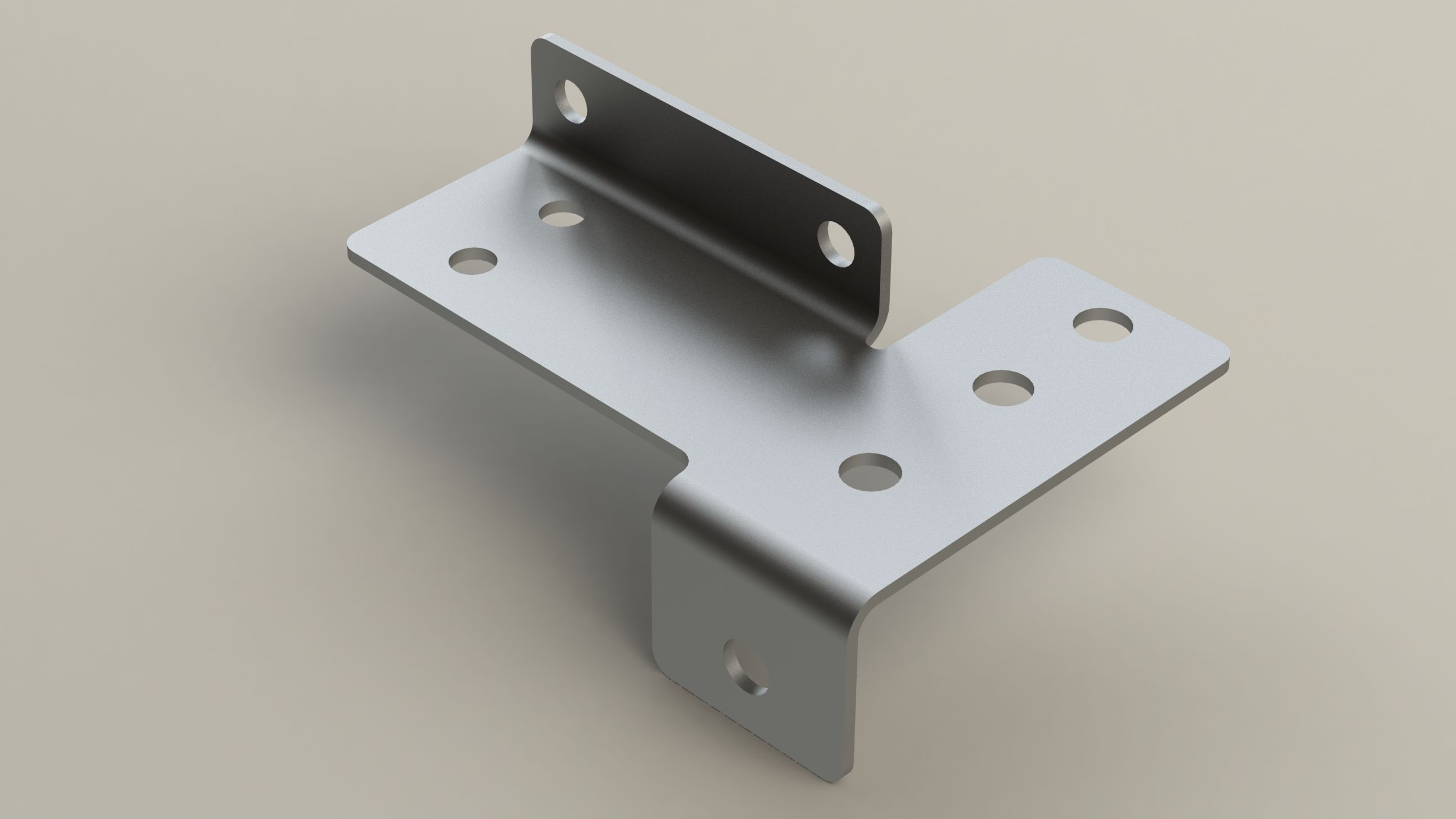SolidWorks Advanced Course
€ TBA
This course provides learners with a comprehensive introduction to parametric modelling and design workflows. Students will develop the skills to work safely and confidently with a parametric modelling workstation, while exploring the key software components and user interface elements essential for effective design. The course focuses on fundamental and intermediate sketching techniques, including the use of constraints and reference geometry to accurately define design intent.
ADD TO CARTCourse Description:
Learning Objectives:
Other Information
Course Outline
-
Module 1: Health and Safety
6 lessons- 1.1 - Hardware
- 1.2 - Software
- 1.3 - Legislation
- 1.4 - Safe working practices
- 1.5 - Common injuries
- 1.6 - Module 1 Quiz: Health and Safety
-
Module 2: Understand the methodology
13 lessons- 2.1 - Understanding SolidWorks
- 2.2 - User interface
- 2.3 - Task plane and program layout
- 2.4 - Design intent
- 2.5 - File operations
- 2.6 - Command Manager
- 2.7 - Measuring techniques
- 2.8 - Free hand sketching
- 2.9 - Features
- 2.10 - Parametric modelling Demonstration
- 2.11 - Viewing tools
- 2.12 - Setting templates
- 2.13 - Module 2 Quiz: Methodology of Parametric modelling
-
Module 3: Getting started basic commands
12 lessons- 3.1 - Sketch tasks
- 3.2 - Sketch Commands
- 3.3 - Sketch Dimensions
- 3.4 - Sketch tools
- 3.5 - Sketch Patterns
- 3.6 - Sketch Entities
- 3.7 - Sketch Location
- 3.8 - Sketch Relations
- 3.9 - Sketch Definition
- 3.10 - Sketch Features
- 3.11 - Sketch Equations
- 3.12 - Module 3 Quiz: Basic Sketch Commands
-
Module 4: Basic Modelling techniques
10 lessons- 4.1 - Work features
- 4.2 - Geometric constraints
- 4.3 - Dimensioning and changing parameters
- 4.4 - Introduction to Sketched features and terminology
- 4.5 - Choosing shape profile and plane
- 4.6 - Create extruded features
- 4.7 - Extrude, Revolved and fillet features
- 4.8 - Surface selection
- 4.9 - Edit existing features
- 4.10 - Module 4 Quiz : Basic Modelling techniques
-
Module 5: Intermediate Modelling techniques
10 lessons- 5.1 - Detailing
- 5.2 - Sweep
- 5.3 - Loft
- 5.4 - Special features
- 5.5 - Hole Wizard
- 5.6 - Feature Conditions
- 5.7 - Selection techniques
- 5.8 - Feature scope
- 5.9 - Co-ordinate System
- 5.10 - Explore standard Features
-
Module 6: Patterning and driven features
13 lessons- 6.1 Mirror command
- 6.2 - Parallel Planes
- 6.3 - Mirror Bodies
- 6.4 - Linear Pattern
- 6.5 - Circular Pattern
- 6.6 - Curve driven Patterns
- 6.7 - Varying Patterns
- 6.8 - Fill Patterns
- 6.9 - Creating Axes and reference geometry
- 6.10 - Sketch driven features
- 6.11 - Design Intent
- 6.12 - Placed Features
- 6.13 - Module 6 Quiz - Patterning and driven features
-
Module 7: Basic Assemblies
11 lessons- 7.1 - Starting an assembly
- 7.2 - Positioning parts
- 7.3 - Adding Mates
- 7.4 - Smart mates
- 7.5 - Show and Hide Components
- 7.6 - Dynamic Clearance
- 7.7 - Advanced Mates
- 7.8 - Exploding assemblies
- 7.9 - Constraints
- 7.10 - Types of assembly constraints
- 7.11 - Module 7 Quiz: Basic Assemblies
-
Module 8: Intermediate assemblies
6 lessons- 8.1 - Advanced modelling: Multibody
- 8.2 - Advanced modelling: Top-Down Assembly
- 8.3 - Advanced modelling: Using configurations with Assemblies
- 8.4 - Sheet format and Templates
- 8.5 - Bill of materials and tables
- 8.6 - Module 8 Quiz: Intermediate Assemblies
-
Module 9: Basic Drawings
10 lessons- 9.1 - Projection
- 9.2 - Templates
- 9.3 - Layouts
- 9.4 - Views
- 9.5 - Details
- 9.6 - Annotations
- 9.7 - Properties
- 9.8 - Appearance of the views
- 9.9 - Saving Formats
- 9.10 - Module 9 Quiz: Basic Drawings
-
Module 10: Intermediate Drawing
8 lessons- 10.1 - Custom template
- 10.2 - Drawing presentation
- 10.3 - Annotation functions
- 10.4 - File Formats
- 10.5 - Rendered
- 10.6 - Dimension commands
- 10.7 - Editing routines
- 10.8 - Module 10 Quiz: Intermediate Drawing
-
Module 11: Configurations, variables and Equations
4 lessons- 11.1 - Configurations
- 11.2 - Global variables:
- 11.3 - 11. Equations:
- 11.4 - Module 11 Quiz: Configurations, global variables and Equations
-
Module 12: Diagnose and repair faults
13 lessons- 12.1 Diagnose problems
- 12.2 Auto repair
- 12.3 Manually repair
- 12.4 Reordering features
- 12.5 Reordering features
- 12.6 Roll back bar
- 12.7 Repair definition problems
- 12.8 Fully define function
- 12.9 Feature problems
- 12.10 Order problems
- 12.11 Repair failed features
- 12.12 Identifying repair order
- 12.13 - Module 12 Quiz: Diagnose and repair faults
-
Bonus: DCG Projects - 2020 - 2025
7 lessons- DCG Projects 2020
- DCG Projects 2021
- DCG Projects 2022
- DCG Projects 2023
- DCG Projects 2024
- DCG Projects 2025
- Untitled quiz
-
Bonus: Model Mania Questions
2 lessons- What is Model Mania
- Model Mania Questions
-
Bonus: Project 1
1 lesson- Advanced Project
Self-Paced Learning
Students can review lessons anytime, pause during complex tasks, and learn at a comfortable speed.
Self-Paced exams
Step-by-step modeling exercises with on-screen guidance, downloadable files, practice activities and individual module exams .
Written by Experts
All courses are written by experienced industry experts who actively work in engineering, design, and advanced manufacturing fields.
You May Also Like


